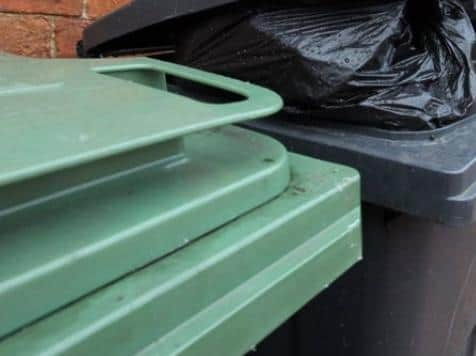Unprecedented increase in Hertfordshire's waste to wipe out council payout for recycling
and live on Freeview channel 276
The impact of the Covid pandemic has led to ‘unprecedented’ increases in the amount of rubbish collected from Hertfordshire homes, it has been reported.
The amount of ‘residual’ household waste – that’s waste that can’t be recycled or composted – is expected to be at least 16,000 tonnes higher by the end of this year (2020/21), than last.
Advertisement
Hide AdAdvertisement
Hide AdAnd the “unprecedented” increase is expected to result in additional costs of £3.7million.


The increases were highlighted to waste officials from the 10 district and borough councils on Monday (January 25), at a meeting of the Hertfordshire Waste Partnership.
And Simon Aries, the county council’s assistant director for transport waste and environmental management, warned that it would have a direct impact on the budgets of district and boroughs across the county next year.
That’s because usually at the end of each financial year the 11 councils receive a payment back from the county council, as part of the ‘alternative financial model’ scheme .
Advertisement
Hide AdAdvertisement
Hide AdThat scheme is designed to reward increases in recycling rates and cuts in ‘residual’ waste within Hertfordshire.
But Mr Aries told the meeting that as a result of the increases in residual waste volumes – and the associated costs – this year there would not be a payout to the district and boroughs, who are responsible for the kerbside collections.
And he said the county council, which is responsible for the disposal of that collected waste, would be facing an additional ‘pressure’ of £500,000.
Mr Aries said the latest projection was based on actual and provisional data – as well as projected data for the final quarter.
Advertisement
Hide AdAdvertisement
Hide Ad“[. . .] Effectively we are heading towards spending round about £3.7m more this year as residual waste, as we see tonnages basically skyrocket because of Covid,” he said.
“That’s an early heads up
“[…] Until we get to the end of the financial year and we get all quarters data in we won’t know for certain.
“But we are predicting over a £500,000 pressure for the county council – and no payouts to any of the waste collection authorities in the ‘afm’ [alternative financial model].
Partnership chair Cllr Terry Hone – who is the county council’s executive member for community safety and waste management – said it was “not good news”.
Advertisement
Hide AdAdvertisement
Hide AdBut he said that with more people at home there was more waste going in to bins, which was impacting on the levels of residual waste.
And partnership development manager Duncan Jones said that in 26 years he had not seen such an increase in residual waste – which he said was ‘unprecedented’.
The county’s reward scheme – known as the ‘alternative financial model’ - works by re-distributing savings accrued to the county council, in its role as waste collection authority, as a direct result of better kerbside recycling practices of the districts and boroughs.
And it is designed to encourage district and borough council to promote recycling, in their role as waste collection authorities.
Advertisement
Hide AdAdvertisement
Hide AdA proportion of these savings are kept by the county council, with the rest shared according to the size of the authority and the ‘in year performance’ – calculating the savings made by each authority compared to the year before.
In 2019/20 the ‘afm’ paid out £4.25million to Hertfordshire’s district and borough councils.
But the unprecedented increases in recycling and residual waste during 2020/21 are said to have practically wiped out the ‘afm’ pot for 2020/21.
Similar reward schemes do operate in other areas of the country with two-tier authorities – where the districts and boroughs are responsible for waste collection and the county council for disposal.
In 2019 a decision was taken to reduce the amount that would be available for redistribution between councils.